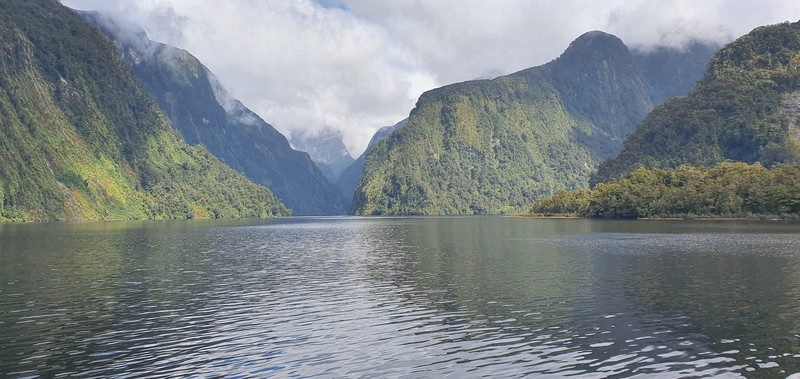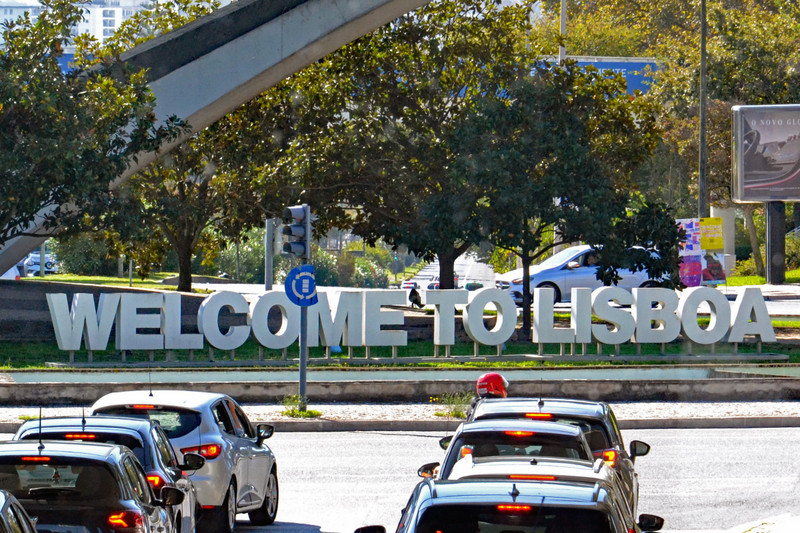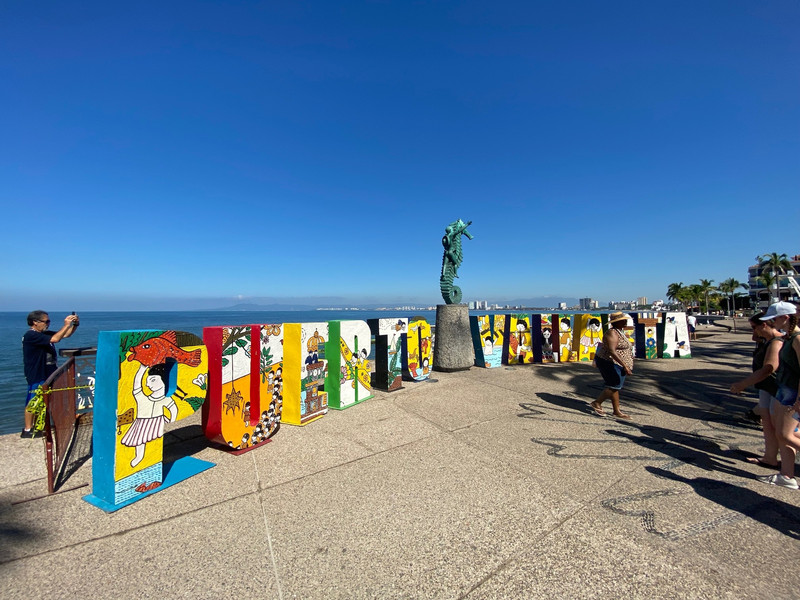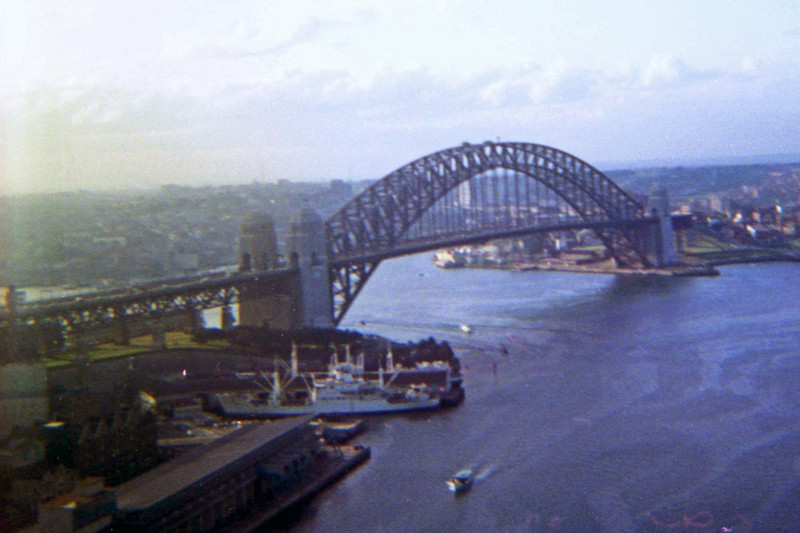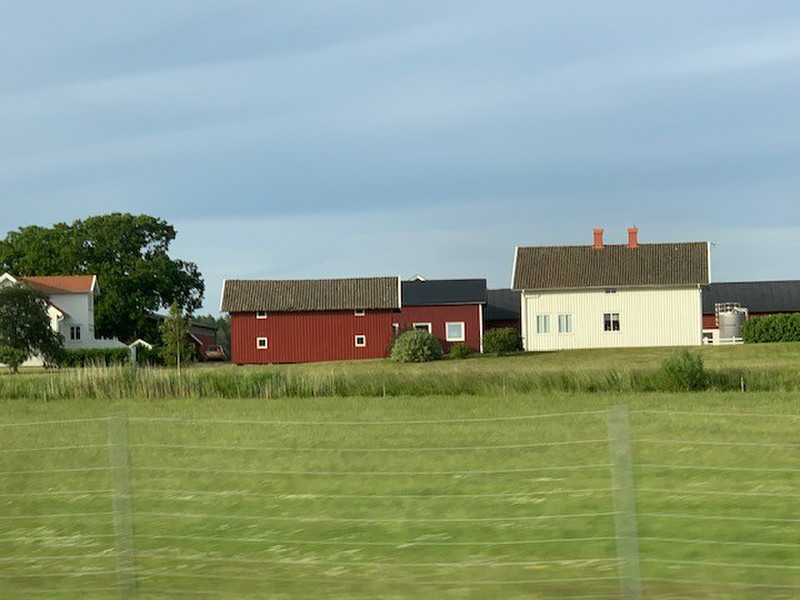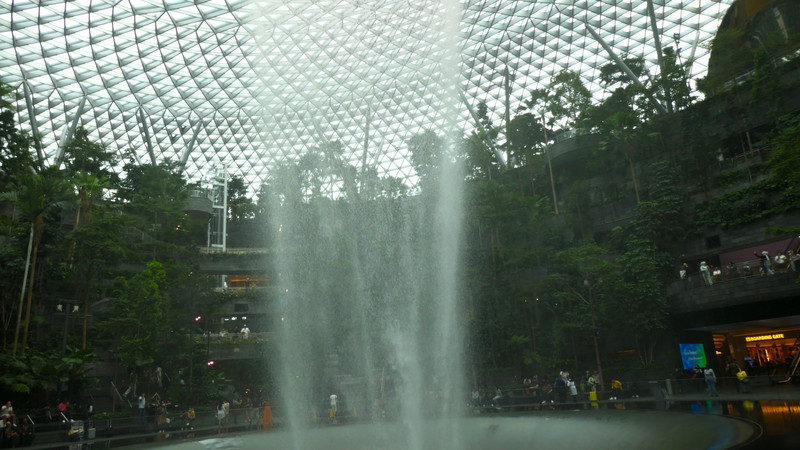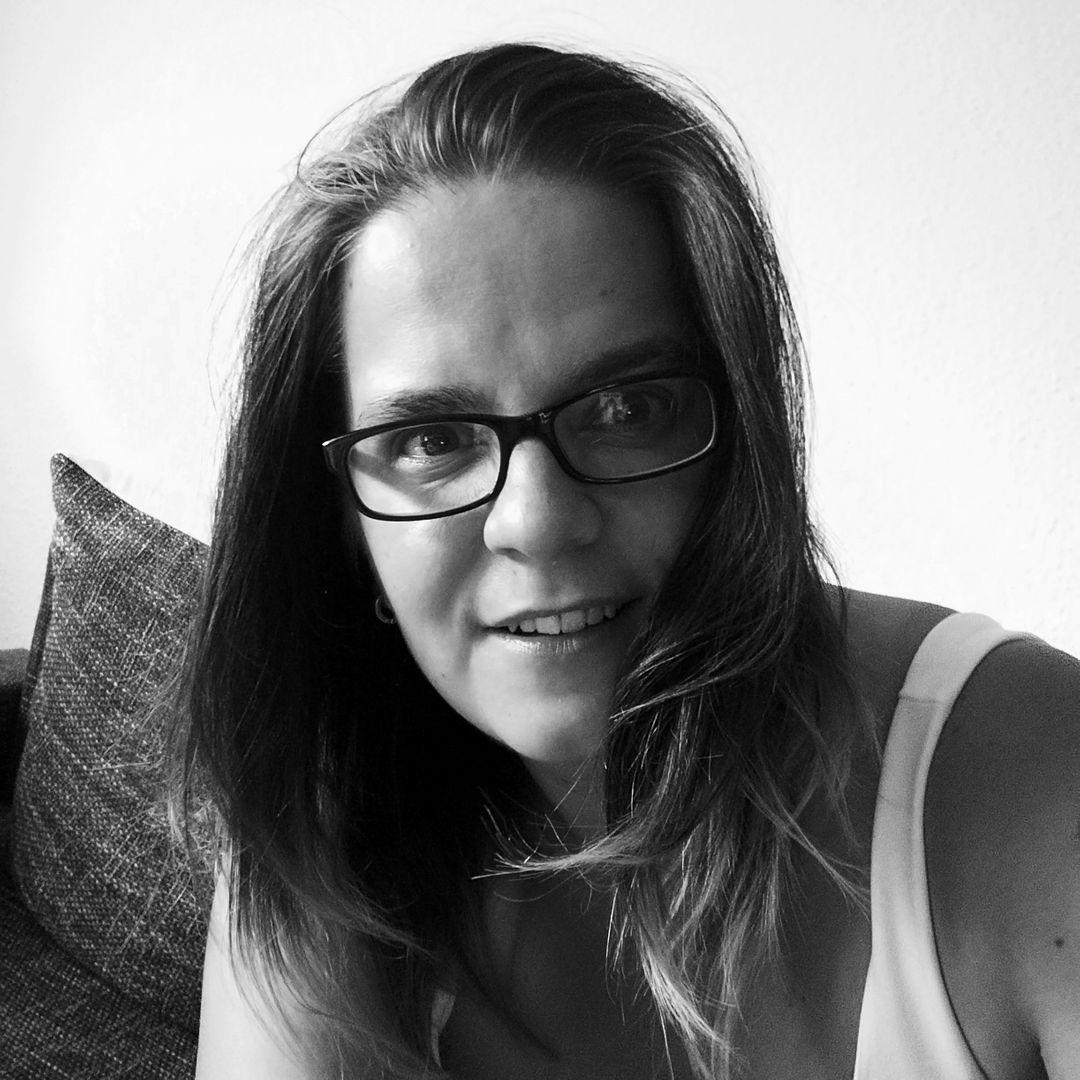Because holiday lodges are not being kept full by overseas people we have found that the restaurant at our motor lodge is not providing all meals, as advertised. This meant that a local cafe run by local people have benefitted so its not all bad.
Due to Covid19, a large contingent of 140 Kiwis boarded the Real Journeys Doubtful Sound vessel at 10.00am. We thought that without all the overseas tourists there wouldnt be huge number of people on the boat but we were wrong. What were finding is that New Zealanders are filling the overseas tourist spaces particularly on the popular activities. Its lovely. Its like it used to be years ago when we didnt have for space. Good for us but not so good for some business owners. Real Journeys seem to be weathering the overseas tourist drought very well.
by the boat captain was very informative the whole way to the West Arm of the lake. The weather started as cloudy, misty, then sunny, then raining and back again as we toured the lake. The scenery is absolutely stunning with waterfalls everywhere, soaring peaks, steep cliffs,
bush cover, islands, and many bays. Our destination was the area known as West Arm where the Manapouri Power Station is. It was built in the 1960s to provide power for the aluminium smelter at Tiwai Point. It is the largest power generating station in New Zealand and was built by drilling a 2km long tunnel under the Wilmot Pass to the machine room. This enabled the water from Manapouri to drop 176m through intakes to the machine room and turbines and out into the Sound through 10km tailrace. Its a massive concern and too much to write about. What is amazing is that it was constructed in such as isolated place where everything had to be shipped in at both ends, a road developed, set up for 1800 workers, and the power infrastructure developed through to Bluff. The other benefit has been the ability to develop the facilities for tourism and Real Journeys has built an excellent business based around the Fiordland area as well as being sponsors for the environment.
The next part of the trip was on the bus over the Wilmot Pass and down to Doubtful Sound. Once again we had a very informative
documentary about the road construction, the geology, the plants, the climate (10m rain) and the environment. We stopped along the way to view one of three permanent waterfalls and an 800 year old stand of beech trees covered with drooping moss. There were amazing vistas along the way.
Then the main part of our journey to tour the Doubtful Sound. Once again we were all herded onto another large vessel and set off down the sound stopping along the way for close ups of waterfalls, rata in flower, the silence and a fresh water experience. For the silence the boat was stopped and all engines switched off. We were asked to be still and focus on the silence which was absolute with just a few birds calling in the distance. For the taste of pure water we were given cups if we were game and the captain backed the boat under a waterfall for us to fill our cups. That was one very wet and very cold experience! But the water was indeed pure. At the end (or the beginning) of the Sound we reached the Tasman Sea where there was a large swell. It was too big to
go out far so the boat was turned around and we sailed behind some islands where the Alpine off land and out to the sea. This is where the Australian Plate is pushing under the Pacific Plate (the opposite to the North Island) and the bit in the middle is sliding sideways. From here we headed back up the Sound and detoured along a couple of arms. What makes this Sound different from the lake are the large number of waterfalls everywhere because of the higher rain fall this side of the alps, and different vegetation because of the climate difference. You are struck by the beauty of mountains in the background unfolding and foreground mountains changing shape as you pass. Lighting changes also when the sun bursts through, or down, or it rains.
